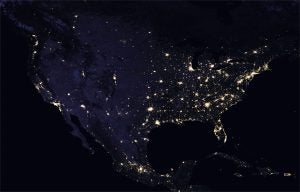Renewable energy, and its role in energy future, is an intense topic that spans across all corners of the energy spectrum. For example, our recent Mexican Energy Series featured a lively discussion of whether Mexico is on course for the 2024 target of 35% renewable energy, and what this pledge means for the country. Each year, as new corporations, municipalities, and countries make bold and vocal commitments to offsetting energy consumption, and to pursuing clean energy resources at a higher level, the conversation intensifies.
For an insider perspective about the current state of renewable energy, we called upon Lenae Shirley, Senior Director, Technology Innovation and Market Adoption for Environmental Defense Fund (EDF). Lenae is working at the nexus of technology, markets and policy, leading efforts with EDF’s demonstration partners to prove the impact of clean technology innovations. As a result of these initiatives, Lenae identifies trends and market opportunities to accelerate the transformation of the electricity sector, with data-driven decisions that push forward market adoption for renewable methods. Here is our conversation. Read More















